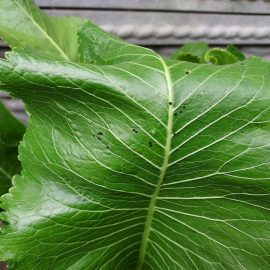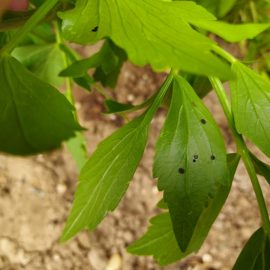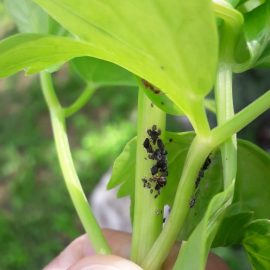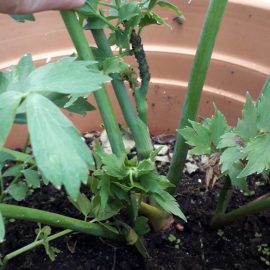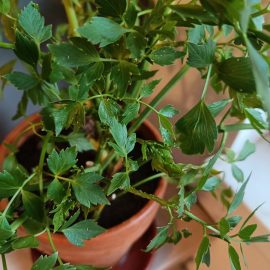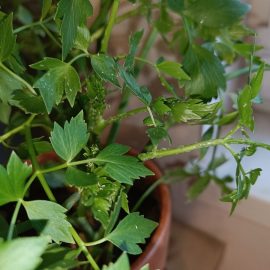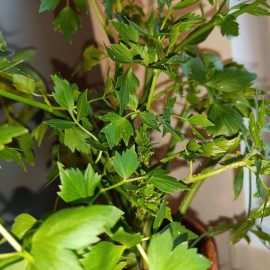Lovage – planting, growing and harvesting
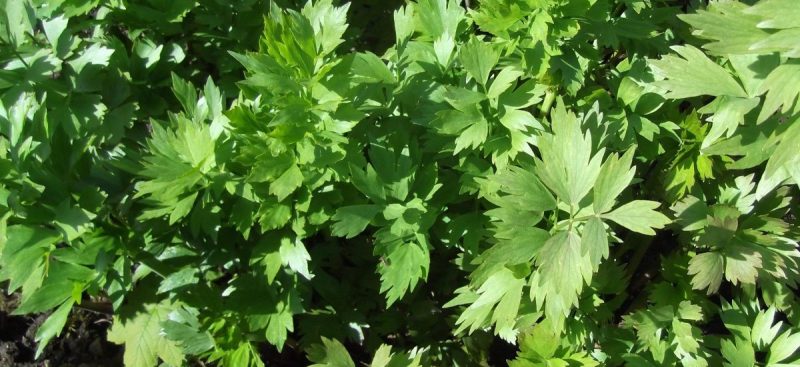
Lovage (Levisticum officinale) is one of the most widely used aromatic plants, being indispensable in various dishes (soups, steaks, etc.). It is native to the Mediterranean area but it is widespread in many countries as an aromatic plant.
Use
From this plant, all the component parts are used. The leaves are mostly used in culinary preparations. The seeds can also be used, due to the rich content of volatile oils. These oils are also the ones that give medicinal properties to this plant. Lovage seeds tea can be used to treat indigestion and stomach pain and the leaf decoction has diuretic and hypotensive properties.
Botanical characteristics
Lovage is a herbaceous, perennial plant that forms a pivot root in the soil and a bush rich in leaves. The leaves are long-petiolate, strongly fragrant, clustered in rosettes. It can reach a height of 1-1.5 m, especially during the flowering phase, due to the tall flowering stem. The inflorescences are of the compound umbel type, have small, straw-yellow flowers, and develop in June-July.
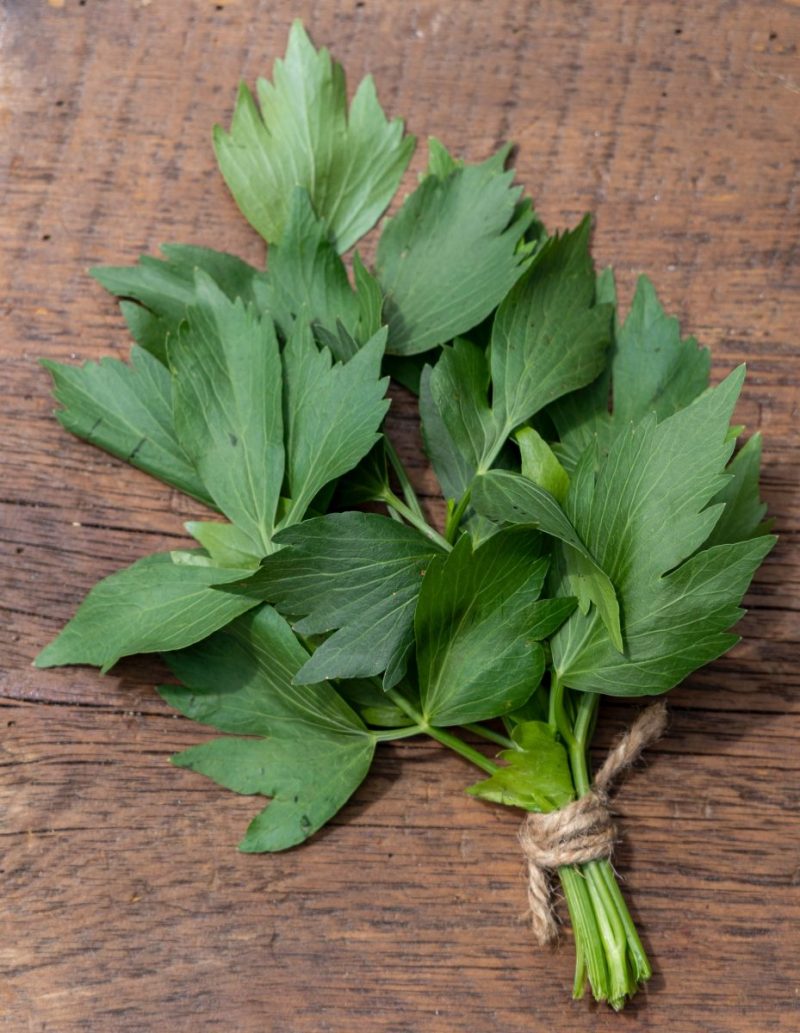
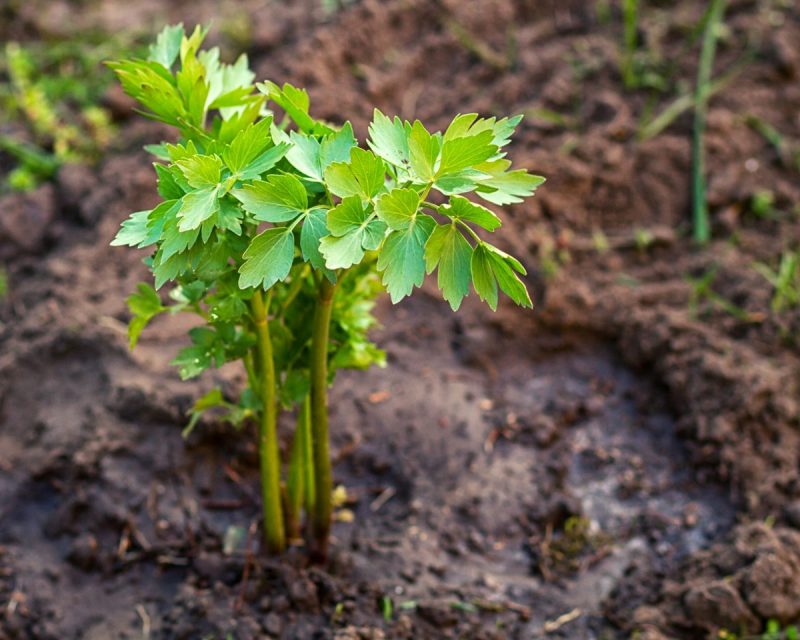
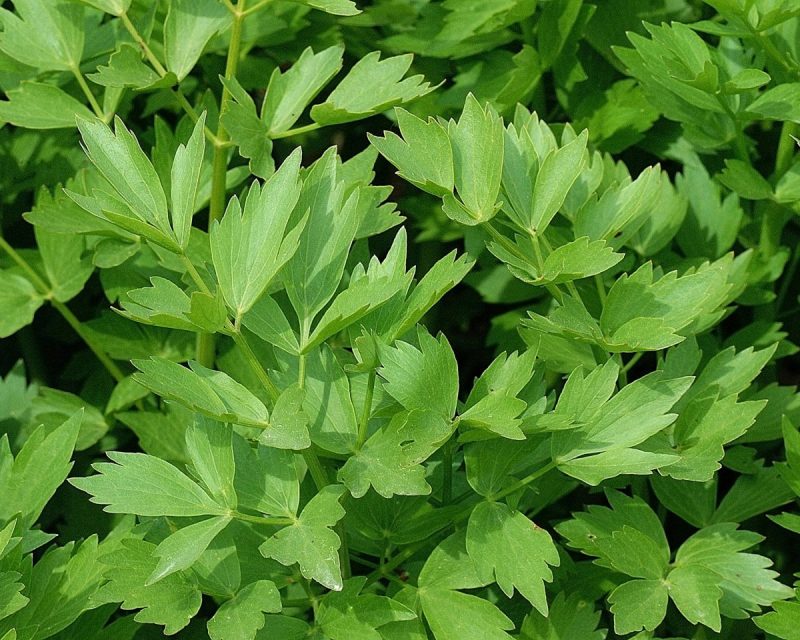
Environmental requirements
Lovage has low demands in terms of soil and environmental conditions, being a very resistant plant, which adapts easily. It prefers deep soils, with a high humus content, located in more protected places of the garden. It can withstand low winter temperatures without any problems and can be grown successfully in the shady areas of the garden. The drought resistance of this species is given by the root that can penetrate into the soil to a depth of up to 1 m. In order to form a rich rosette of leaves, irrigation is required during dry periods.
Cultivation
Lovage culture establishment can be done through seeds or vegetatively, by dividing the bushes.
The sowing work can be done in the first month of autumn or spring, in March-April, after the land has been plowed and well processed. When carrying out soil works, it is recommended to administer balanced organic or NPK fertilizers. Given the small size of the seeds, it is necessary that the soil be well tilled before sowing and rolled after sowing, for better contact between it and the seeds.
Recommended products
-
You can find products on a different store
Change Store -
You can find products on a different store
Change Store -
You can find products on a different store
Change Store -
You can find products on a different store
Change Store -
You can find products on a different store
Change Store -
You can find products on a different store
Change Store -
You can find products on a different store
Change Store -
You can find products on a different store
Change Store -
You can find products on a different store
Change Store -
You can find products on a different store
Change Store -
You can find products on a different store
Change Store -
You can find products on a different store
Change Store -
You can find products on a different store
Change Store -
You can find products on a different store
Change Store -
You can find products on a different store
Change Store -
You can find products on a different store
Change Store -
You can find products on a different store
Change Store -
You can find products on a different store
Change Store -
You can find products on a different store
Change Store -
You can find products on a different store
Change Store -
You can find products on a different store
Change Store -
You can find products on a different store
Change Store -
You can find products on a different store
Change Store -
You can find products on a different store
Change Store
Ensuring constant soil moisture is very important to encourage germination. For this reason, you should sow the seeds in hotbeds or alveolar trays in order to obtain the seedling, which will later be transplanted to the place of cultivation, in rows at distances of 60 cm, with 25-30 cm between plants.
Dividing the bushes can also be done in autumn or spring, in the same periods, keeping the same planting distances. Before transplanting, the leaves of the planting material have to be shortened, the roots shaped and dipped in a mixture of manure. Water the plants well after transplanting. The advantage of dividing the bushes is that the plants start growing quickly and form rich bushes.
Lovage can be grown during the cold season in protected areas, if a temperature of at least 10℃ can be ensured, keeping in mind that it should preferably be up to 20℃ during the day. Polyhouses covered with thermal foil can ensure good environmental conditions if the outside temperatures are not much below zero degrees. Also, the plants can be covered with agriculture foil, for a higher temperature
Care
Care work consists of water management, weed control, especially when the plants are small, and phase fertilization throughout the growing season. Water can be successfully administered through drip irrigation systems. In spring, as soon as the plants have started growing, water-soluble mineral fertilizers can be administered through the irrigation system. Fertilization in stages can be performed after harvesting the leaves, with balanced NPK type fertilizers. Weed control, as well as soil loosening, can be done through manual or mechanized tillage.
In the case of plants grown in flowerpots or in the garden, to ensure their nutrient requirements, a specially formulated fertilizer can be administered regularly.
Recommended products
-
You can find products on a different store
Change Store -
You can find products on a different store
Change Store -
You can find products on a different store
Change Store -
You can find products on a different store
Change Store -
You can find products on a different store
Change Store -
You can find products on a different store
Change Store -
You can find products on a different store
Change Store -
You can find products on a different store
Change Store -
You can find products on a different store
Change Store -
You can find products on a different store
Change Store -
You can find products on a different store
Change Store -
You can find products on a different store
Change Store -
You can find products on a different store
Change Store -
You can find products on a different store
Change Store -
You can find products on a different store
Change Store -
You can find products on a different store
Change Store -
You can find products on a different store
Change Store -
You can find products on a different store
Change Store -
You can find products on a different store
Change Store -
You can find products on a different store
Change Store -
You can find products on a different store
Change Store -
You can find products on a different store
Change Store -
You can find products on a different store
Change Store -
You can find products on a different store
Change Store
Harvesting and storage
Lovage can be harvested from the first year, in stages, during the whole year of vegetative growth. The leaves can be harvested individually, as needed, or by cutting the bushes, paying attention to protecting the growth tip.
The leaves can be kept fresh only for a few days, in dark places, at 3-5℃. For later consumption, the leaves can be dried and stored in dry, well-ventilated places.
To produce the seeds, cut the flower stalks when the fruit begins to turn brown, dry the stems, and then harvest the seeds.
Diseases and pests
Lovage is frequently attacked by septoria (Septoria levistici), which manifests itself as brownish spots with a light-colored center. Aphids can also be a problem in lovage culture, attacking young leaves, and some borer insects can devour the mature leaves.
If symptoms are observed, apply treatments with approved products.














































































































































































































































































































































































































































